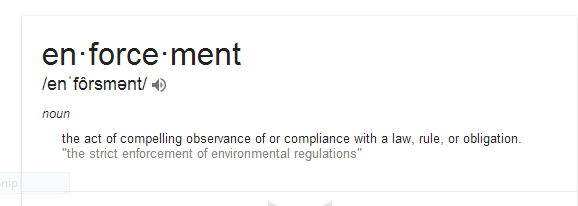Please read this post first by Martha McCaughey.
“Clear Communication” Must Include Self-Defense
I think that the above referenced makes some great points. I will expand upon it in terms of my model of Progressive Boundary Setting.
My interpretation is that effective boundary setting must include Clear Communication and Enforcement. Physical self-defense is a form of Enforcement. It is not enough to only communicate boundaries. The communication must be backed up by the consequences of enforcement if the boundary is violated. Just-Right (appropriate) enforcement creates respect for personal and societal boundaries (Rules of Behavior).
Some people violate boundaries because they don’t understand where the boundary is. Other people violate boundaries because they lack respect for the boundary. In the scenarios described by Martha, there is a continuum of certain violating men. On the less extreme side are the self-deluded men who for whatever reason are misinterpreting the woman’s communication (boundaries). On the more extreme side are men who don’t respect the woman’s boundaries and knowingly violate them.
According to a highly referenced study, the majority of collegiate sexual violations come from a small percentage of serial male offenders. These are the men who knowingly violate their victims. The other violations come from people (usually men) who due to certain factors, some mentioned in Martha’s article, sometimes compounded by alcohol, unknowingly violate their victim’s boundaries.
Most people think of interpersonal communication mainly in the form of body language (Visual Fence) and verbal phrases (Verbal Fence). These are the first two levels of communication. But the 3rd and higher level of communication comes in the form of physical actions (Physical Fence). Body language is easily misunderstood. Verbal phrases are less likely to be misunderstood, but can be ignored, especially, if the words are uttered without forceful emotion. Direct physical actions that support simultaneous verbal phrases are hard to misinterpret.
The important point here is that everyone’s current belief is subject to change. The “Unknowingly” man may believe that the woman wants sex with him up only up to a certain point. Regardless of what events transpired before, a person who “thinks” that someone else wants to have sex with him or her is vulnerable to having his or her belief shattered by clear communication that comes in the form of unequivocal verbal combined with direct and forceful physical resistance.
The greater problem comes from the serial offenders who not only knowingly violate their victims. They knowingly seek out victims that are unlikely to enforce their boundaries. These serial offenders’ belief systems combine self-delusion with a lack of respect for their victim’s boundaries and for societal behavioral boundaries. Part of their belief system is that they can and will get away with their actions. This belief is backed up by previous incidents where they have got away with their violations without consequence.
Dealing with this type of person requires more than just communication. Effective physical enforcement is needed to stop violations by either making the violator unable to commit further violations or unwilling to commit further violations. Resistance in the form of pushing away, pulling away, and half-hearted strikes is more communication and less enforcement. Creating pain and injury in the form of biting, gouging eyes, breaking fingers, ripping ears, crushing windpipes and testicles is more enforcement and less communication.
It is easier to temporarily change a belief than it is to physically stop someone from doing something. The serial offender’s belief is not just that they can do something. It is also that they can do it AND get away with it without consequence. Enforcement directly conveys to violators that they will not get away with their actions. Enforcement is not only interruption of a violation, enforcement can also happen after the violating event.
It is the combination of individual enforcement along with societal enforcement from school administrations coupled with legal consequences that creates the overall enforcement that breaks the serial offenders’ belief systems of impunity and creates respect for the Rules of Behavior.
In summary, self-defense training is complimentary to societal methods of primary violation prevention. It is not one or the other. Self-defense makes it easier for society to punish offenders because it eliminates the “Unknowingly” defense. The presence of college women who are willing to enforce violations increases the risk of collegiate perpetrators getting caught and punished. It alters the misguided belief systems of serial offenders who think they can do whatever they wish without consequence, thus providing a strong deterrent to future violations
